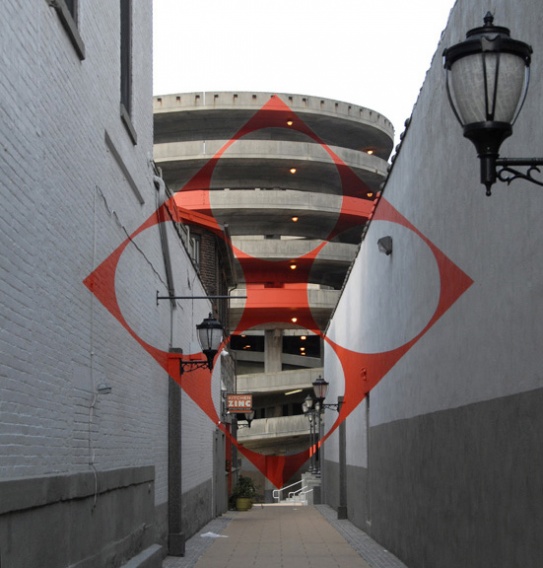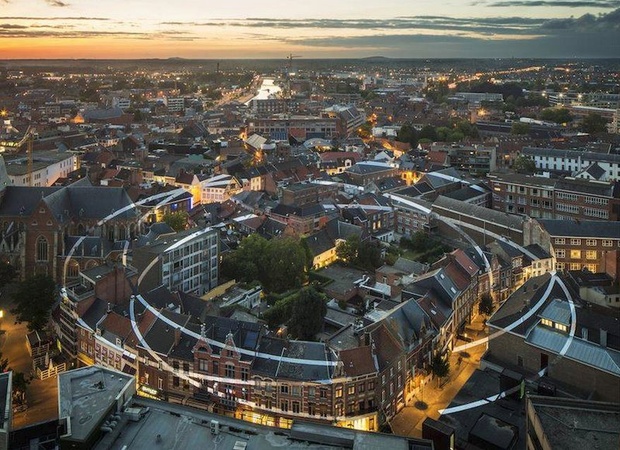A Brief Change of Perspective
Posted July 14, 2014
This week we are taking on a theme on the ESI Blog. A great deal of the firm’s work takes place in physical spaces that already exist or are already designed. ESI’s assignment is to enliven the space with a specific experience. In a sense, we revitalize the physical space, allowing visitors, an audience to experience the space in a new way. Ed Purver, Senior Designer in our Technology and Media department, puts it well in a blog post from last year: “I thrive on making people look again at familiar places, to see the places again. Working with the identity of the place and with the stories that come from the community and context, I revitalize the experience of being there.” In many ways, our current work of invigorating the experience of physical spaces with technology driven experiences is exactly that. The theme of reinventing the physical space is an idea that is talked about often in our office. Over the course of three posts this week we are going to take a look at several projects that turn the experience of a place on its head. We start with the work of artist Felice Varini. Varini works in the installation art world, but not in the traditional sense. Varini has been doing great work since he started showing perspective drawings in 1979. These days he works at the grand scale, creating perspective drawings in physical spaces. These installations take on various forms across many locations. He has painted on the walls of Versailles in 2005, a 12th century abbey in western France in 2006, an Augustinian monastery in Monta Carasso in 2004, and in 2010, he crossed the Atlantic and painted a geographic installation in New Haven, Connecticut.

Looking down the alley that housed the “Square with four circles,” in Temple Plaza, the physical space took on new meaning and form when the shapes were aligned to produce the illusion. Even when stepping away, we can imagine that the normally mundane urban passageway retained an enhanced experience. The experience stuck as a legend. Throughout his work, Varni has succeeded in reshaping the physical space through altered perspective. He is able to help visitors re-imagine the places in question. From the website for the latest installation in Brussells, “Trois ellipse ouvertes en disordre“, this brief description outlines that way in which and the why Varni works in the spaces he chooses: Swiss artist Felice Varini always sets out to create interventions in the existing architecture of the urban and industrial landscape. The open space is the canvas upon which the artist applies his geometric colour planes. From a carefully chosen position, Varini ‘projects’ his perspectival figures across the sprawling city. He is, however, particularly interested in what happens in the areas outside of that one vantage point, where only fragments of the artwork can be seen and all sense of coherence is gone.

This installation or painting can only be viewed in whole from one specific point, the top story of a nearby hotel. From other angles and places, only bits and pieces of the work can be seen. A slash on a building or a glance of a stripe across a rooftop emerge as people pass through the city. Even in that way, the painting calls attention to the way in which this type of work alludes to something greater looming over the city. A brilliant detail that we take away from Varni’s work is the subtlety at scale. What that means is that his work is large, it inhabits grand places and makes grand statements. But the form and the visions that he produces are subtle. He doesn’t seek to instill the place with confusing statements or abstract patterns. He chooses geometric security for his work. This instills both a sense of wonder and understanding in his work that designers should learn from. Perspective is changed and wonder is produced from his work while maintaining simple lines and recognizable form. In the end the user experience is enhanced by familiarity and surprise. In short, it is changed by the altered perspective. A short review of some of Varini’s work can be viewed on City Lab, here.


Join The Conversation